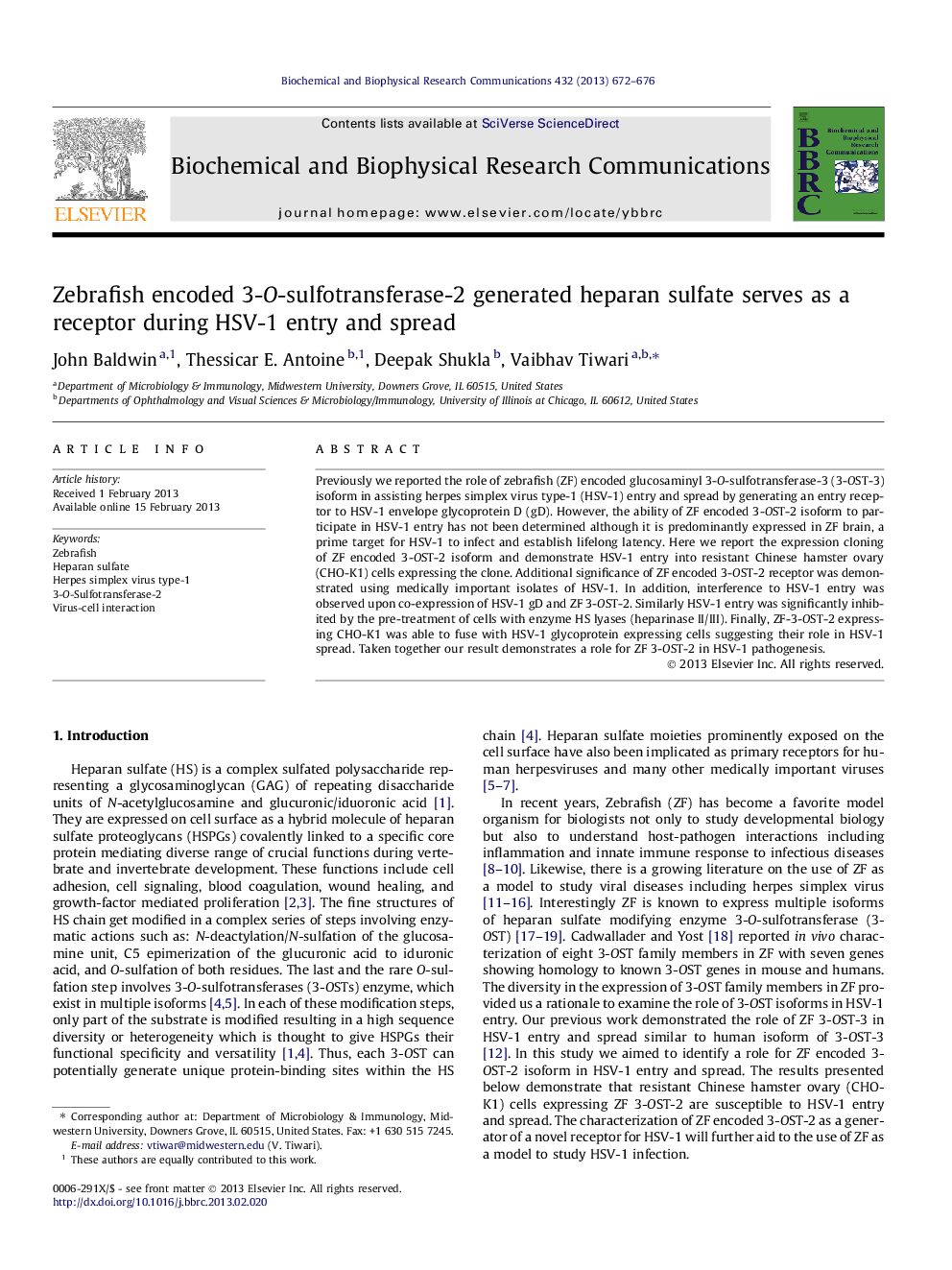| Article ID | Journal | Published Year | Pages | File Type |
|---|---|---|---|---|
| 1928831 | Biochemical and Biophysical Research Communications | 2013 | 5 Pages |
Previously we reported the role of zebrafish (ZF) encoded glucosaminyl 3-O-sulfotransferase-3 (3-OST-3) isoform in assisting herpes simplex virus type-1 (HSV-1) entry and spread by generating an entry receptor to HSV-1 envelope glycoprotein D (gD). However, the ability of ZF encoded 3-OST-2 isoform to participate in HSV-1 entry has not been determined although it is predominantly expressed in ZF brain, a prime target for HSV-1 to infect and establish lifelong latency. Here we report the expression cloning of ZF encoded 3-OST-2 isoform and demonstrate HSV-1 entry into resistant Chinese hamster ovary (CHO-K1) cells expressing the clone. Additional significance of ZF encoded 3-OST-2 receptor was demonstrated using medically important isolates of HSV-1. In addition, interference to HSV-1 entry was observed upon co-expression of HSV-1 gD and ZF 3-OST-2. Similarly HSV-1 entry was significantly inhibited by the pre-treatment of cells with enzyme HS lyases (heparinase II/III). Finally, ZF-3-OST-2 expressing CHO-K1 was able to fuse with HSV-1 glycoprotein expressing cells suggesting their role in HSV-1 spread. Taken together our result demonstrates a role for ZF 3-OST-2 in HSV-1 pathogenesis.
► Zebrafish 3-OST-2 isoform was necessary for the HSV-1 entry. ► HSV-1 entry was strain independent. ► The results show 3-OST-2 role in HSV-1 entry and spread.
